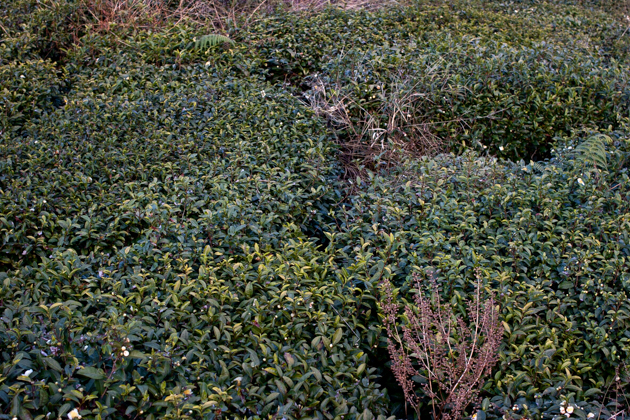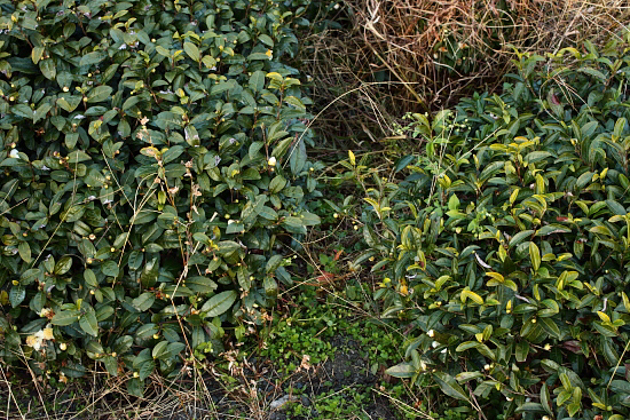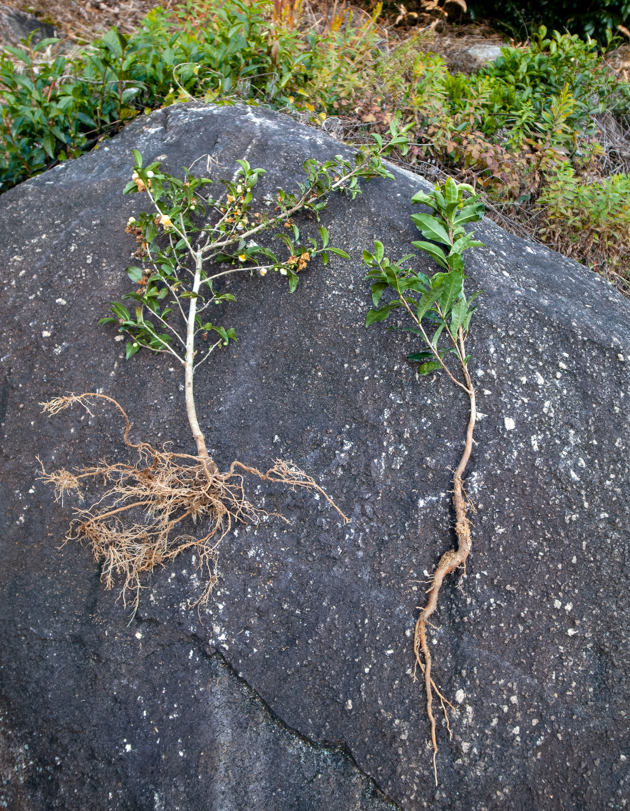- HOME >
- How to choose quality tea
Amazing difference between seedling tea and cultivated tea
- [2020.04.01] Posted By Akira Hojo

Do you know that tea is divided into two groups: cultivated tea propagated by cuttings, and seedling tea grown from seed?
There is actually a big difference between cultivated tea and seedling tea.
What is Cultivar?
The cultivated tea refers to tea with a name of specific cultivar, such as Yabukita, Benifuki, Okumidori, Tie Guan Yin, Rou Gui and Qing Xin Oolong. Among the same cultivar, tea from all tea trees gives same flavour profile because it is propagated with cloning technique.
If tea is grown from seed, it does not inherit the same characteristics as the parent tree.
For example, even if you sow the seed of Fuji apple, it won’t grow into Fuji apple but F1 hybrid, although it may carry certain characteristic of Fuji apple.
Because apples and teas are sexual reproduction, like human, so half of the child’s chromosomes are inherited from the mother (female) and another half from the father (male).
Therefore, if you want to preserve unique characteristics, cutting techniques are used. The cutting technique is also a cloning technique. It will preserve the genetic trait.
Although it is only a small part in China, the cultivar is also preserved by grafting.
Seedling ( Zairai) Tea
On the other hand, tea gown from seeds is called “seedling”.
In the case of Japanese tea, it is commonly called as “Zairai”. In Japan, there are teas with unusual names, such as Yabukita Zairai, which means tea was sown from the seeds of Yabukita cultivar.
As mentioned above, the tea sown from seeds differs from tree to tree. Just as we have brothers and sisters. They have similar characteristics but different. When you visit the tea garden, if the tea trees are grown from seeds, you would observe various shapes of tea leaves in one tea garden, as shown in the following two photos.


Tea trees look the same on the ground but the secret lies underground
There are surprising differences between seedlings and cultivated tea.
The difference lies underground.
If you look at the pictures below, seeing is believing.
On the left is a cultivated tea and on the right is seedling tea.

The roots of the seedling is thick and long. It extends deep into the ground, whereas the roots of cultivated tea are thin, and short like hair, and it spread near the ground surface.
The cultivated tea trees have roots near the ground surface, so they are easy to absorb fertilizer, but because of their shallow roots, they are easy to fall down and lack the ability to absorb minerals deep underground.
Seedling tea is resistant to storms and lasts longer. It is rich in minerals because its roots extend deep underground, so under the same conditions, it make the taste of tea thicker and stronger.
In my experience, Yunnan in China has the world’s most prominent seedling teas. There are many old trees in Yunnan, and most of them are seedling teas.
The Quality of Grafted Tea
The grafting technique is also used for preserving cultivar. Relatively, this technique is common for Phoenix Dan Cong.
If you graft a certain cultivar on an ancient tea tree, what do you think about the taste and the quality of the tea?
Right after grafting, the taste is not very good because the branches try to grow fast.
However, it is said that after about eight years, the quality is reaching to the same level as the mother tree.
The method of grafting is an interesting technique because it preserves the unique flavour characteristics, and the quality is maintained.
Related Articles
How to get the latest update on HOJO?
1. Follow Twitter, 2. Click "Like" on Facebook, and 3. Subscribe in newsletter. You can have the latest tea news from HOJO.
 Subscribe the Newsletter to enjoy the privileges
Subscribe the Newsletter to enjoy the privileges- You may receive a free sample upon purchase, or you may have the priority to purchase special products. So please remember to subscribe our newsletter as well as the social network.
- Myanmar White Tea Bud 2013 from Guo Gan, Myanmar
- We have released a raw Pu-erh tea, 緬甸白芽茶 2013 (Myanmar White Tea Bud 2013), produced by ethnic minorities in t …
- Yong De Wild White Tea 2025 Loose Leaf Limited Release
- We have released Yong De Wild White Tea Loose 2025. For the 2025 harvest, only the loose-leaf type was …
NEW ARTICLES
 Myanmar White Tea Bud 2013 from Guo Gan, Myanmar
Myanmar White Tea Bud 2013 from Guo Gan, Myanmar- We have released a raw Pu-erh tea, 緬甸白芽茶 2013 (Myanmar White Tea Bud 2013), produced by ethnic minorities in t …
 Yong De Wild White Tea 2025 Loose Leaf Limited Release
Yong De Wild White Tea 2025 Loose Leaf Limited Release- We have released Yong De Wild White Tea Loose 2025. For the 2025 harvest, only the loose-leaf type was …
 Experience the True Freshness of Raw Pu-erh : Tang Jia 2025 Loose Leaf Release
Experience the True Freshness of Raw Pu-erh : Tang Jia 2025 Loose Leaf Release- We have released Tang Jia Raw Pu-erh Tea 唐家古樹生茶 2025 Loose Leaf. Among HOJO’s raw pu-erh teas, Tang Jia Raw Pu …
 Yunnan Chun Jian Green Tea from High Mountain Gardens
Yunnan Chun Jian Green Tea from High Mountain Gardens- Yunnan Chun Jian Green Tea is now available. This tea is made from naturally grown leaves harvested from high …
 Limited Loose Leaf Release of 2025 Da Xue Shan Wild Raw Pu-erh Tea
Limited Loose Leaf Release of 2025 Da Xue Shan Wild Raw Pu-erh Tea- We have released the 2025 loose-leaf version of Da Xue Shan Wild Raw Pu-erh Tea. This tea comes from wild tea …
 Discover a New Way to Enjoy Tea: Cooking Rice with Tea
Discover a New Way to Enjoy Tea: Cooking Rice with Tea- Cooking rice with tea is a simple idea, but it brings surprisingly satisfying results. The tea’s flavour seeps …
 2025 Da Xue Shan Wild White Tea Now Available from Yunnan
2025 Da Xue Shan Wild White Tea Now Available from Yunnan- The 2025 harvest of Da Xue Shan Wild White Tea is now available. Crafted from truly wild Camellia taliensis tr …
 Fresh 2025 Yunnan White Tea – Select Your Favourite Lot Before Blending
Fresh 2025 Yunnan White Tea – Select Your Favourite Lot Before Blending- Freshly crafted in Yunnan and just arrived in KL, our new 2025 white tea is now available at our Gardens Mall …
 2024 Dong Shan Raw Pu-erh Tea – Crafted with the Producer for Desired Quality
2024 Dong Shan Raw Pu-erh Tea – Crafted with the Producer for Desired Quality- We have released the 2024 cake of Dong Shan Raw Pu-erh Tea. Earlier, we offered the loose-leaf version from th …
 Development of Firewood Roasted Hojicha Using Naturally Grown Tea from Yunnan
Development of Firewood Roasted Hojicha Using Naturally Grown Tea from Yunnan- We are currently staying in Yunnan Province for tea production. As the season nears its end, tea trees with pa …
Category
- New Arrival at HOJO Online Shop
- Featured Articles
- Newsletter
- Types of Tea
- Origin of Tea
- Teapot and Tea Equipment
- Tea Column
- How to enjoy tea
- Tea Processing
- How to choose quality tea
- Tea constituents and functional effect
- Safety of Tea
- Foods
- Tea Business Operation
- Hobby and Outdoor Activity
- Ranking of Tea
- Video
- FAQ
- Media Release
Profile

- AKIRA HOJO
- I invite you to experience my tea selections.I was born in Nagano, Japan. In university, I studied agricultural chemistry, and I have the master degree in food science. I worked in Japanese food industry for 10 years. I involved in R&D, QC and QA. As a factory manager, I implemented ISO9000 series and managed the factory.
- The Art of Tea Magazine
- We posted the article on “The Art of Tea Magazine No.9, the magazine is published in Taiwan. We featured …
- New Straits Times
- The Malaysian National Newspaper, New Straits Times featured HOJO Tea on 17-Oct-2007.
Shop Info

Address:Lot No. T-215, 3rd Floor, The Gardens Mall, Mid Valley City, Lingkaran Syed Putra, 59200 Kuala Lumpur
Tel: +603-2287-4537
Business Hour: 10am to 10pm














